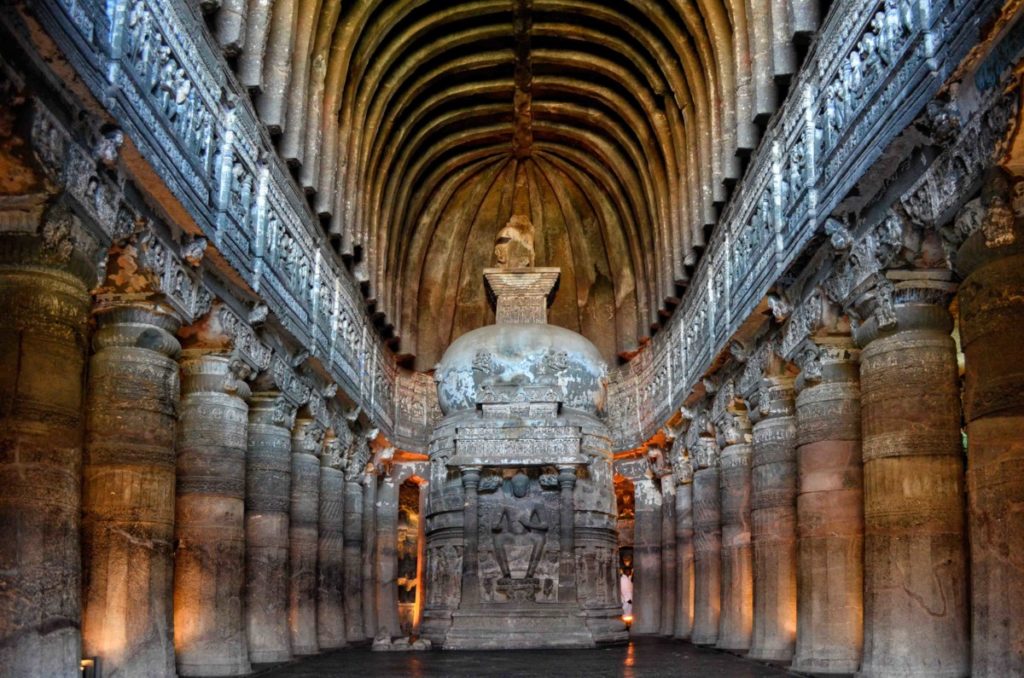The Norbulingka Institute: The Safekeeping of Tradition
Some years ago I went for a journey up to the mountains in Himachal Pradesh in India to visit my dear friends Monisha and Vasundhara. At first, I stayed with them in a beautiful little house in Bir, a village famous for spiritual studies and Buddhist monasteries, place where Tibetian refugees found their new home. A couple of hours away from Bir is Dharamsala, home to the Dalai Lama and Tibetan government-in-exile, a spiritual centre for Tibetan Buddhism, Tibetan museum and library. As guests we stayed in Thosamling nunnery near the rural village of Sidhpur for the few days, enjoying beauty and peace of this place, surrounded by terraced grain field and mountains. In a walking distance from the nunnery guided by Vasundhara, I discover a fascinating place, Art centre of the Norbulinka Institute. For me, as a great admirer of Buddhist Tibetan art and craft, it was a wonderful experience to meet artists themself at their work in their studios, to watch and learn how traditional Tankas created. As a memory, I took some photographs of this place and people with me. Sometime later, as a part of the Dharma Eye project, I wrote an article about Norbulinka Institution for Buddhistdoor Global magazine to support my photographs and tell a story about this little gem in the Western Himalayas.
The Norbulingka Institute: The Safekeeping of Tradition
Article first published by Buddhistdoor Global | 2014-10-17
Traditions handed down carefully from generation to generation connect people with both their past heritage and future possibilities. Art traditions interlace customs, collective experience, aesthetic principles, and faith in symbolic imagery that transmits the riches of heritage for safekeeping. The preservation of artistic traditions from ancient times is important for a society in itself, as well as creating the basis for fruitful multicultural exchange.
Founded in 1988 by Kelsang and Kim Yeshi in Sidhpur, near the seat of HH Dalai Lama in Dharamsala, northern India, the Norbulingka Institute was established to preserve and promote Tibetan culture and arts both for the Tibetans living in exile and the greater global community. In the present day, the institution is a leading centre in providing education in Tibetan culture, arts, and crafts. The Norbulingka Institute, whose name translates as “Jewelled Park” or “Treasure Garden,” was named after the traditional summer residence of the Dalai Lamas just outside Lhasa in Tibet, comprising a palace and its lush surrounding park. It was built by the 7th Dalai Lama in 1755 and served as an administrative and religious centre right up until 1959, when the 14th Dalai Lama, Tenzin Gyatso, fled to India.
Construction of the original palace and gardens was begun on hard, barren earth overgrown with weeds and scrub, but has engendered an amazing representation of unique Tibetan palace architecture that is now listed as a UNESCO World Heritage Site. In an intricate reversal of fortune, it was damaged, rebuilt, and renamed, and is now open to the public as a tourist attraction. By contrast, the new Tibetan “Jewelled Park” in India is thriving as a working institution and boasts a beautiful “Seat of Happiness” temple, a doll museum, an art centre, a literary and cultural research centre, an intimate Japanese-inspired garden, a guest house, a gallery, and a café.
The “Seat of Happiness” temple, or Deden Tsuglagkhang, is well known for its beautiful and colourful murals depicting 1,173 images of the Buddha and the succession of Dalai Lamas. The life of the 14th Dalai Lama is also chronicled on the walls, in the form of drawings. In the muted light at the centre of the temple stands a four-meter-high gilt-copper statue of the historical Buddha, Shakyamuni. Crafted by the Norbulingka’s master statue-maker, the late Chenmo Pemba Dorje, this impressive statue is one of the largest outside Tibet. Above the Buddha’s head is a clay image of Garuda, surrounded by reliefs of bodhisattvas, floral ornaments in gold, and auspicious symbols. The temple’s grandeur and peaceful atmosphere leave a pleasing impression on the viewer, as well as elevating the mind aesthetically.
The Losel Doll Museum houses a unique collection of 150 costumed dolls depicting the regional, official, and monastic costumes of Tibet. These were created by a group of artist-monks from Drepung Loseling Monastery, which has been re-established in southern India.
However, the most fascinating place in the Norbulingka Institute must surely be the art centre. Here, one can acquire a first-hand understanding of authentic, traditional techniques of Tibetan arts and crafts, such as thangka painting and appliqué, statue-making, woodcarving, textiles, and metalwork. A number of old masters work here. True artists, they pass their knowledge and skill down to the new generations of Tibetans, both men and women, for whom the learning process is a journey of rediscovery of their own heritage—a way to be in touch with the homeland they have never seen.
The artists’ studio is spacious and well lit. Here, young men work on the intricate details of traditional thangka paintings depicting the life of the Buddha or illustrating momentous events in the lives of great lamas and bodhisattvas, or of the mandalas of tantric deities. In another workshop, women are engaged in making appliqué thangkas, a process that requires incredible patience and many months of work. The elaborate designs consist of numerous hand-cut pieces of silk and brocade that, in this colourful way, retell stories and myths surrounding the historical Buddha and portray various deities. Revived at the Norbulingka Institute by the old masters, this ancient Tibetan technique has received a new lease of life.
The two primary techniques of repoussé and chasing, both requiring great skill, are employed in the making of statues in the metal workshop. The metal may be worked on an adjustable anvil or over a bed of pitch that supports the material as it is shaped. These techniques allow for tremendous detail, not only in the facial and other features but also in the remarkable flow of garments and the rich decoration of the aureoles.
All the handicrafts made in the Norbulingka Institute present an extraordinary level of quality, creating or preserving a perception of Tibetan arts and crafts as exceptional among the world community. Not only does the institute provide education in arts and crafts, but its output also supplies the institution and the local community in exile with a major source of income. While only Tibetan students are admitted to the institute, workshops are offered to interested people from overseas. These serve to open new vistas of understanding and appreciation of such a majestic, profound, and beautiful art tradition, contributing greatly to its preservation for generations to come.
The wonderful mission of Norbulingka’s literary and cultural research centre is to gather and rewrite ancient Tibetan texts, both secular and religious. The centre now employs 16 young writers, who share a commitment to making this material available in order to promote awareness of Tibetan culture and heritage. The centre aims especially to increase readership among Tibetans, observing that most Tibetan children in India are incapable of reading and writing in their own language due to the lack of printed material in Tibetan.
When you encounter a myriad of people relocated so far from their homeland, living in exile yet finding the inspiration and energy to create beauty by keeping their traditional arts alive, deep respect for their fortitude and spirit quickly gives way to ardent admiration.
The beauty speaks for itself.






